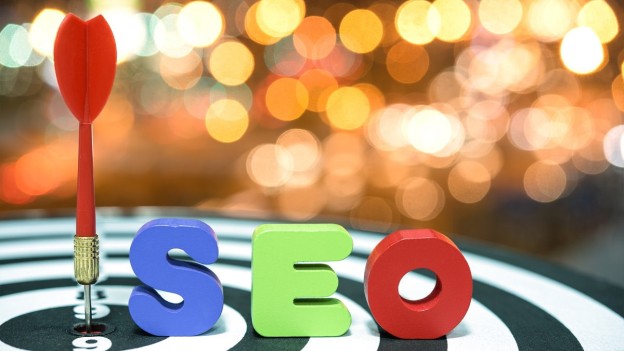Wrong Focus
The first reason why you may not be getting customers from Google is because you are focusing on the wrong aspects. Instead of looking at your business holistically, you may be paying too much attention to unimportant details, such as SEO plugins (e.g. Yoast) that are designed to make everything green.
You may think that it is necessary to use SEO tools that suggest pasting a keyword ten or fifteen times in the text to get your page to rank high, or to blindly follow every recommendation in the Google Ads panel because "that's what Google says." Focusing on the parameters of analytical tools showing various domain indicators or page speed is important, but individual techniques used without understanding the broader context are ineffective.

Imagine that you want to become a footballer, but you only practice throw-ins. You can be perfect at it, but will that make you a good soccer player? You need to train a variety of skills to achieve success. Focusing only on individual elements, without understanding and implementing a broader strategy, leads to chaos and lack of results. Randomly implemented techniques may be mutually exclusive.
If you read somewhere that you only need to do "one thing" to get to the top of Google search results, remember that that one thing can only work in a specific context, which the author may have already set. For example, I can show you how to write an article on a company blog that will be in the TOP 10 search results for a selected phrase within a few days. But it's not just about optimizing this one article - success depends on Google's global rating of the entire domain.
Therefore, instead of focusing only on individual optimization elements, articles or subpages, it is important to approach SEO and marketing in a holistic way. Without a planned, comprehensive strategy, achieving success will be difficult, just like with weight loss - there is no magic pill. The entirety of your approach to life, nutrition and physical activity affects whether you will lose weight. In SEO and other areas of internet marketing, a single technique alone will make little difference.
Your website can become an effective source of customer acquisition, but a holistic approach to your online strategy is key, as we'll discuss next. I want this point to be a reminder that success at Google and other areas of marketing requires looking at things from a broader perspective.
Not Matching Intent
The second reason why you may be missing customers from Google is because it's not matching the searcher's intent. You must realize that everyone who enters a phrase in Google has a specific need - and it is not always a purchase. Sometimes people just want to get information or do research.
If you are unable to identify and understand these intentions, you will face a big problem. The key here is to match the content to the specific need described by the key phrase. When someone searches for a product, it is natural that they want to go to the product page. However, if his goal is to obtain information, he expects a website that will help him with research, and not immediately try to sell something.
Imagine a situation in which you go to a store for advice, and instead of asking what you need, the salesperson immediately tries to sell you something. Most websites, especially SEM campaigns, work this way. This is a waste of money, especially when someone is looking for, for example, a ranking or comparison and is not yet ready to buy. Adapting to the user's needs is key.
Right from the search results level, you have to promise that your site offers exactly what they're looking for, and then your landing page has to deliver on those promises. Otherwise, you are wasting your resources and your SEO efforts and Google Ads campaigns are ineffective. Failure to match the searcher's intentions may make them feel cheated or simply leave the site quickly.
While this may seem obvious, the reality is that few companies and marketing agencies approach it consciously and strategically, which is a real shame. Adapting to users' intentions and preferences can significantly increase the effectiveness of campaigns and the number of acquired customers.
Low-quality content
The third reason why you may have trouble attracting customers from Google is the low-quality content on the landing pages that users land on right after entering the search results. Many companies wrongly assume that being high in Google results automatically translates into more customers.
However, no matter how high your site ranks, if your content is unable to convert traffic into customers, your efforts and investments will be wasted. The problem often lies in content that is not tailored to the needs of users and is of average quality. It is important to understand that the quality of content is not limited only to linguistic correctness.
It is primarily about what information the customer receives at a given stage of the purchasing process and what arguments convince him to make a purchase. In order for the content to be effectively tailored to the target group, it is necessary to know it thoroughly and understand its needs and problems. When the content speaks directly to the recipient, website visitors feel that the message is addressed to them, which builds trust and translates into a greater willingness to make a purchase.

Content writing is just the tip of the iceberg; the much bigger challenge is understanding what to write in the first place. If you decide to outsource content writing to external contractors, remember that someone who is not part of your company may not be fully aware of the specifics of your brand, customer approach and message, which often results in the creation of content that is of average or low quality. Additionally, writing content with SEO in mind is the wrong approach.
First, you should focus on the substantive value of the text, its place in the page structure and the need it is supposed to meet. SEO optimization should come only at the end. What's the point of being in the first place in search results if the content on the website discourages customers? It is also worth remembering that the best content is the one that combines valuable information with your experience. People want to read texts that are more than just dry facts; they are looking for content that will speak to them and provide value.
So remember to weave your own perspective and experience into your content, which will make it more compelling and effective.
Lack of website development
The fourth reason why you may have difficulty attracting customers from Google is the lack of continuous website development. Many entrepreneurs wrongly assume that creating a website is the last step in its development. However, the reality is different - creating a website is just the beginning. It is not enough to simply "position" a website in a search engine and expect that everything will go smoothly.
Already at the website design stage, you need to think about SEO and then regularly develop the website, add new content, structure elements and test various solutions that influence conversion. Work on the website never ends; there is always something that can be improved, tested, changed. Making a website "once every five years" is an approach that does more harm than good. Such a violent, revolutionary upheaval could destroy everything that has been achieved so far.
Instead, site development should be an evolutionary process where you gradually make changes, sometimes even updating the design if necessary. One of the biggest mistakes is creating a website mainly for yourself, and not with the user in mind. Instead of relying on the opinion of friends or family, it is worth seeking opinions directly from customers or employees who have direct contact with customers. They know better what the users' needs and problems are, which can be a valuable tip for further development of the website. We also cannot forget about continuous optimization of the website in terms of conversions and SEO.
Regularly review what's working and what's not, and adjust your content to be as compelling and effective as possible. The approach that "we will create a website and it will generate customers on its own" is unrealistic. Success requires regular work and continuous development, just like regular physical exercise - you won't get fit by doing a thousand sit-ups once a year. You need to act systematically and regularly to achieve the expected results.
Lack of analytics
The fifth reason why you may not see the expected results from your online activities is the lack of web analytics. Without analyzing the results, it is difficult to determine whether the actions taken make sense and whether they bring the desired results. Limiting yourself only to basic indicators, such as the amount of traffic on the website or the number of contacts, is insufficient. Similarly, even an analysis of sales alone does not give a complete picture of the situation. To effectively manage online activities, it is necessary to understand and track many different metrics, tailored to the specifics of your business.
Knowledge about the cost of customer acquisition, the cost of acquiring a lead (including qualified leads), the average basket value in e-commerce or the total value of a customer in e-commerce is crucial. Only thanks to such data can you understand how your investments affect your business and how to optimize your activities. If you are running paid campaigns, it is important to know the profitability of each campaign. Recognizing which campaigns are more profitable allows you to allocate your budget more effectively, which in turn translates into better results and higher earnings.
Access to detailed data allows you to effectively manage your campaign and make the right business decisions. Acting "on your guard" without the basis of solid data analysis often ends in failure. Intuition, while sometimes helpful, is not a reliable tool in making business decisions. To sum up, it is difficult to make good decisions without analytics. Measuring and analyzing various aspects of your online activity is essential to understanding your campaign's effectiveness and the direction you need to take to achieve success.
Mindless copying of the competition
The sixth reason why your online activities may not bring the expected results is mindless copying of the competition. This applies to various aspects of online business - from the appearance of the website to communication and structure. It's important to remember that each company has its own unique target group, values and way of communicating, which means that what works for one company may not produce the same results for another.
Copying your competitors without understanding why certain solutions work for them is risky. Just like in sports, where each athlete has his or her own individual training plan tailored to his or her needs and abilities, in business there is no universal way to success. What works for one company may not work for another, especially if you differ in terms of SEO strategy, pricing strategy, value proposition or customer approach.
For example, if your competitors focus on promoting low prices, they may do so because they have exceptionally favorable purchasing terms from distributors that are not available to you. In this case, focusing solely on price may not work for you. Instead, it is worth finding and emphasizing other values that will make your offer stand out. Similarly, copying the website structure or SEO and Google Ads strategies of competitors without in-depth analysis and understanding may prove ineffective.
It is possible that a competing website is adapted to a completely different purchasing process or different user intentions than yours. Being inspired by competitors' activities is natural and can be useful, but it is crucial to carefully adapt these inspirations to your own business and online strategy. Mindless copying will not only not bring the expected results, but may also make you lose your uniqueness and you will not know why certain actions do not work. Therefore, I encourage you to develop your own solutions, tailored to the unique needs and capabilities of your company.
Test and analyze, but remember to always adapt what you discover to your strategy rather than directly copying the competition. This will allow you to stand out in the market and achieve lasting success.
Improper sales process
The seventh reason that may make it difficult to achieve success in online sales concerns not the visibility on Google itself, but the proper handling of the sales process. You must be aware that even the greatest reach and traffic on the website will not translate into success if the sales process and customer service are not at the appropriate level. For example, a problem may arise when the quality of customer service is insufficient.
Even the best paid campaigns will not bring the expected results if salespeople do not respond to customer calls or inquiries. This was the case with one of our clients who complained about the quality of leads from paid campaigns. After a thorough analysis, it turned out that the problem lay in customer service - only some of the company's branches actually attempted to contact potential customers. Similarly, in online stores, a complicated purchasing process may discourage customers.
Too many fields to fill out or unintuitive selection options may cause customers to abandon purchases, even if they have already added products to their cart. In these cases, the key element is to optimize UX (User Experience) and simplify the purchase process to make it easier for the customer to finalize the transaction. Not responding to customer inquiries or too long contact forms are other examples of mistakes that can sabotage your marketing activities.
Even the best visibility on Google will not bring the expected results if you do not ensure quick and effective communication with your customers. Therefore, focusing solely on SEO and traffic generation may be less effective than improving the sales and customer service process itself. It is high-level service that allows you to transform reach and traffic into real profits. Therefore, I encourage you to thoroughly analyze and optimize sales processes in your company, both in the case of online stores and traditional customer service.
Without this, even the best marketing strategies may turn out to be ineffective.
Finding shortcuts
The eighth reason why your marketing activities may not bring the expected results is trying to find shortcuts. In the world of business and marketing, there are no easy solutions to bypass the need for hard work and commitment. Although this point applies to marketing in a broad sense, not only to Google, this principle applies universally.
Companies often pretend to engage in marketing, perhaps by writing occasional blog posts or purchasing a few links, but without a consistent strategy and regularity, such activities fail to produce results. The basic mistake is to treat marketing as a set of random activities, without deeper understanding and commitment. For example, occasionally posting on social media without a content or sales strategy is not true content marketing, social media marketing or social selling.
If you don't have the time to commit to these activities, it's better to hire someone who can help, or decide to learn and implement the necessary actions yourself. Cooperation with marketing agencies also requires commitment - you cannot simply assign a task and forget about it. As in the case of working with a personal trainer, the agency can provide direction and support activities, but without the company's commitment, it is difficult to achieve success.
Likewise, a limited marketing budget cannot be an excuse for inaction. If the largest players in the industry invest significant sums in marketing, low-budget proposals for "strangely cheap" may turn out to be ineffective. The key is the willingness to invest time and money. Without the involvement of these resources, it is difficult to achieve effective marketing. If you don't have either, it may make more sense to consider other customer acquisition methods. Trying to find a shortcut often ends with no results and wasted resources.
In marketing, as in many other areas, there is no room for half-measures. Commitment, coherent strategy and readiness to invest are the key to success. Looking for shortcuts not only does not bring the expected results, but may also harm your brand in the long run.
Relying only on Google
The last reason why your marketing activities may not bring the expected results may surprise you: it is relying solely on Google. Although Google is an extremely important part of online marketing, it is not the only channel through which you can reach potential customers and influence the purchasing process.
Stopping only on Google is a limitation that can prevent you from fully realizing your marketing potential. Google is often responsible for the beginning of the purchasing process when people search for information, products or services. However, the purchasing process does not end with the search itself. There are many other methods and channels that can support and strengthen the purchase decision, such as email marketing, video marketing, remarketing (not only on Google, but also on social media platforms such as Facebook or Instagram), as well as many other activities that they can attract and engage potential customers at various stages of their purchasing journey.
Marketing and branding require presence in many places, not only in the Google search engine. Once a customer lands on your website from Google, it's important that they don't forget about your brand, which means you need to be reminded of yourself in various channels and contexts. This requires conscious planning and building sales paths that go beyond a single point of contact.
It is worth remembering that although Google is crucial in many purchasing processes and often constitutes a significant part of the marketing strategy, it should not be the only course of action. Focusing solely on Google may cause you to miss other, equally important opportunities to reach customers and build lasting relationships with them. Diversifying your marketing activities and using the full spectrum of available tools and channels is the key to building a strong and recognizable brand that effectively converts potential customers at various stages of their purchasing journey.



